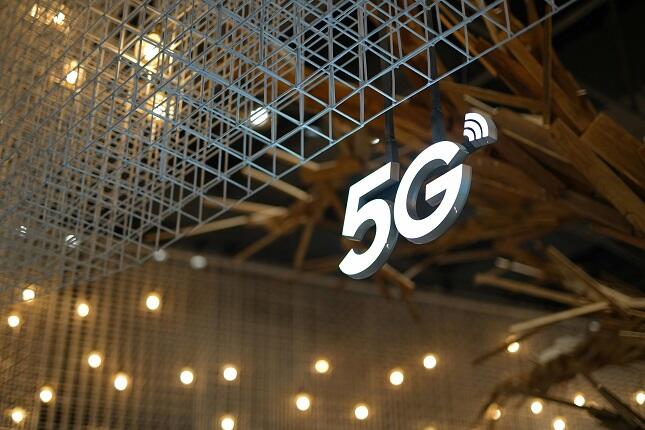With the official launch of 5G-Advanced (5G-A) in 2024, global telecom carriers and industry stakeholders have been concentrating efforts on applying the technology to drive industrial upgrades and capture new market opportunities. Among the frontrunners, ZTE 5G stands out for delivering a transformative solution specifically for media production and broadcasting.
Its 5G-A minimalist private network solution directly addresses long-standing challenges in the sector, bringing higher efficiency, scalability, and reliability to wireless broadcasting. ZTE 5G is reshaping the future of media production with a smarter, simpler, and faster network architecture while offering a technical breakthrough for broadcasters worldwide.
ZTE 5G Tackles Traditional Media Broadcasting Challenges
Broadcasting has long relied on wired systems, which are often labor-intensive and costly. Laying cables is time-consuming, maintenance is difficult, and safety risks increase in complex production environments. Attempts to transition to wireless methods using Wi-Fi and 4G were made, but neither solution could meet professional broadcasting requirements.
Wi-Fi’s operation in the unlicensed spectrum leaves it vulnerable to interference and security risks. Meanwhile, 4G systems lack the capacity and low latency needed for high-definition live production. Sub-6 GHz 5G networks also face bandwidth limitations, restricting the number of supported wireless cameras and struggling to meet the demands of 4K and 8K production or low-latency live broadcasting.
5G-A millimeter wave (mmWave) technology, offering high capacity and extremely low latency, has emerged as the ideal candidate for transforming wireless media production. ZTE 5G has built its solution around this capability, opening new possibilities for live broadcasting.
ZTE 5G: A Minimalist Private Network Solution for Broadcasting
Leveraging the large bandwidth and ultra-low latency of 5G-A mmWave, ZTE introduced its 5G-A minimalist private network solution specifically for wireless media production and broadcasting. Combining advanced 5G-A RF equipment with its NodeEngine computing board, the solution forms a high-performance, ultra-reliable private network optimized for the demands of modern broadcasting.
The structure focuses on simplicity and efficiency: wireless transmission eliminates cumbersome cables, while localized data processing through NodeEngine minimizes delays. The solution’s design makes it highly suitable for complex event coverage, including major indoor and outdoor productions.
ZTE Enables Cable-Free, High-Quality Broadcasting
The ZTE 5G wireless backpack is key in achieving complete cable-free operation. Designed for practicality, it integrates video encoding, battery, and 5G-A CPE (customer premises equipment) into a compact form factor. Weighing just around 5 kilograms and holding a volume of approximately 3 liters, the backpack allows camera operators to move freely and comfortably during extended shoots.
Compatibility remains a core focus. The wireless backpack can be connected to a wide range of camera equipment without modification using standard open interfaces like SDI and HDMI. This ease of integration lowers barriers for broadcasters transitioning from wired to wireless workflows.
The cable-free design not only boosts operational flexibility but also improves safety by reducing tripping hazards and the need for extensive pre-event cable laying.
ZTE 5G Delivers High Performance with Ultra-Low Latency
At the heart of the network, ZTE 5G provides dedicated RF equipment to suit different scenarios. For outdoor environments, the 1.6 GHz 5G-A mmWave active antenna unit (AAU) delivers extensive and stable coverage. For indoor venues, the compact MiCell micro-station offers flexible deployment with cascading capabilities, allowing broadcasters to easily expand coverage when necessary.
Once video signals are captured, they are wirelessly transmitted to the RF unit, routed through the 5G-A baseband unit (BBU), and processed locally via the integrated NodeEngine board. This setup allows for direct, low-latency transmission to the production control center without passing through the public network.
Performance metrics highlight the system’s capabilities. Each camera achieves an uplink rate of up to 2 Gbps, with a wireless round-trip time (RTT) of just 4 milliseconds. Full end-to-end latency remains below 100 milliseconds to enable seamless switching between wired and wireless camera feeds. This performance easily accommodates live 4K/8K production demands and supports the industry’s growing need for high-definition, low-latency broadcasting.
ZTE 5G Provides High Reliability and Simplified Deployment
One of the most attractive aspects of the ZTE 5G minimalist private network solution is its operational simplicity. Once preliminary site verification is completed, a single technician can complete deployment within two days. The system’s plug-and-play NodeEngine board simplifies the process, making rapid service activation possible.
All video data remains confined to the local network, significantly improving security over traditional wireless solutions. The flexible deployment options for the base stations allow adaptation to various venue sizes and structural complexities, whether for concerts, sports events, or high-profile live broadcasts.
The solution’s design ensures stable and high-quality video transmission even during complex shooting requirements such as mobile tracking shots, close-ups, and drone footage capture. Future capabilities, including augmented reality overlays, even higher resolutions, and cloud-native production models, are also well-supported.
ZTE in Action: Proving the Advantage at Major Events
The strength of ZTE 5G’s broadcasting solution was demonstrated during the 2024 CCTV Spring Festival Gala, one of China’s largest and most demanding live television events. Supporting multiple wireless HD cameras simultaneously, the system achieved 99.99999% reliability over the event’s five-hour duration.
Camera operators were able to switch seamlessly between wired and wireless feeds, with no perceptible difference in latency or quality. A notable highlight was the midnight countdown, where close-up shots captured via the wireless camera system were broadcast without disruption. CCTV recognized the solution as a major breakthrough for new media production.
The Gala’s vertical-screen broadcast reached 420 million views, representing a 57.58% increase compared to 2023. This milestone further demonstrates how ZTE 5G’s solution is helping broadcasters reach larger audiences while simplifying production logistics.
Similar success was recorded at the 2024 Malaysia Games (Sukma), where the 5G-A minimalist private network enabled flexible, high-quality coverage across multiple sports venues without the complications of traditional cable setups.
ZTE 5G is Shaping the Future of Media Production
Integrating 5G-A mmWave technology into professional broadcasting marks a turning point for the industry. By addressing the persistent challenges of cost, mobility, latency, and capacity, ZTE 5G opens a path for wireless-first broadcasting that does not compromise quality or reliability.
As media production increasingly demands higher resolutions, lower latencies, and more flexible shooting arrangements, ZTE’s 5G-A minimalist private network solution positions itself as a vital tool for the future of broadcasting. It supports broadcasters in creating more dynamic live productions, reaching wider audiences, and exploring innovative content formats without being tethered by cables or limited by older wireless technologies.
ZTE 5G’s contributions to the transformation of media production are significant, offering a smarter, simpler, and faster model for the industry to build upon.







































